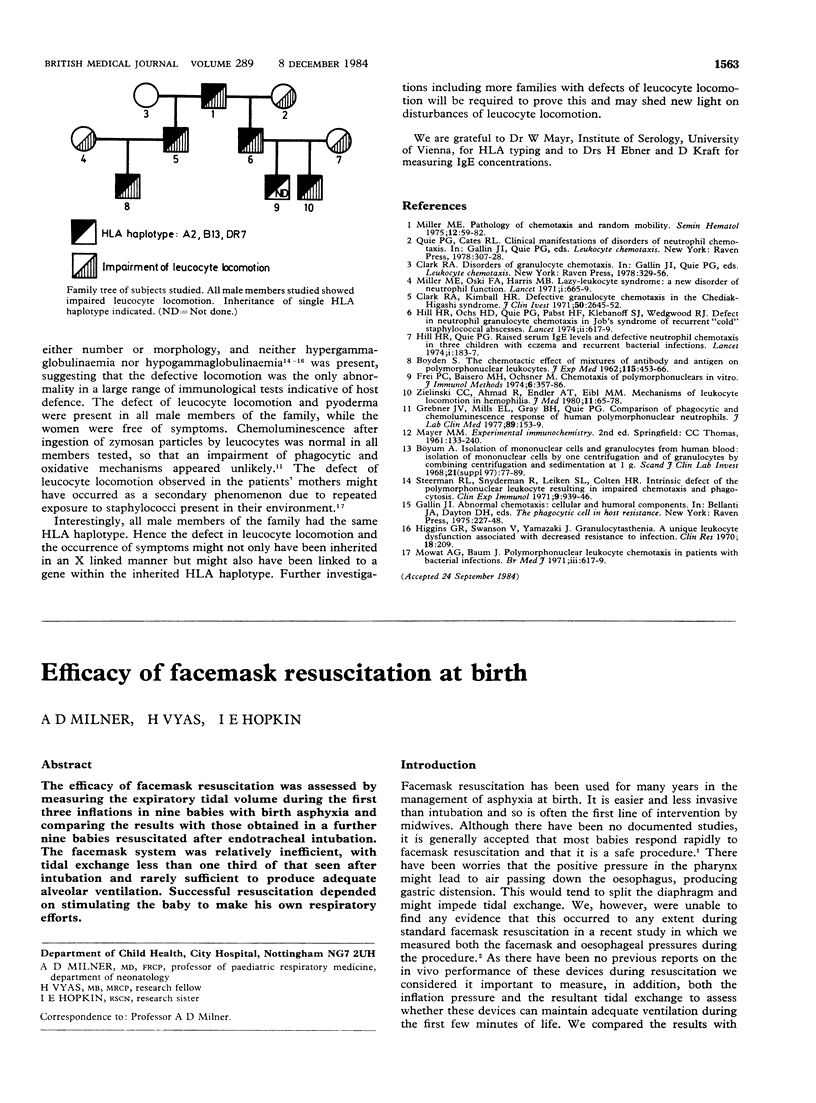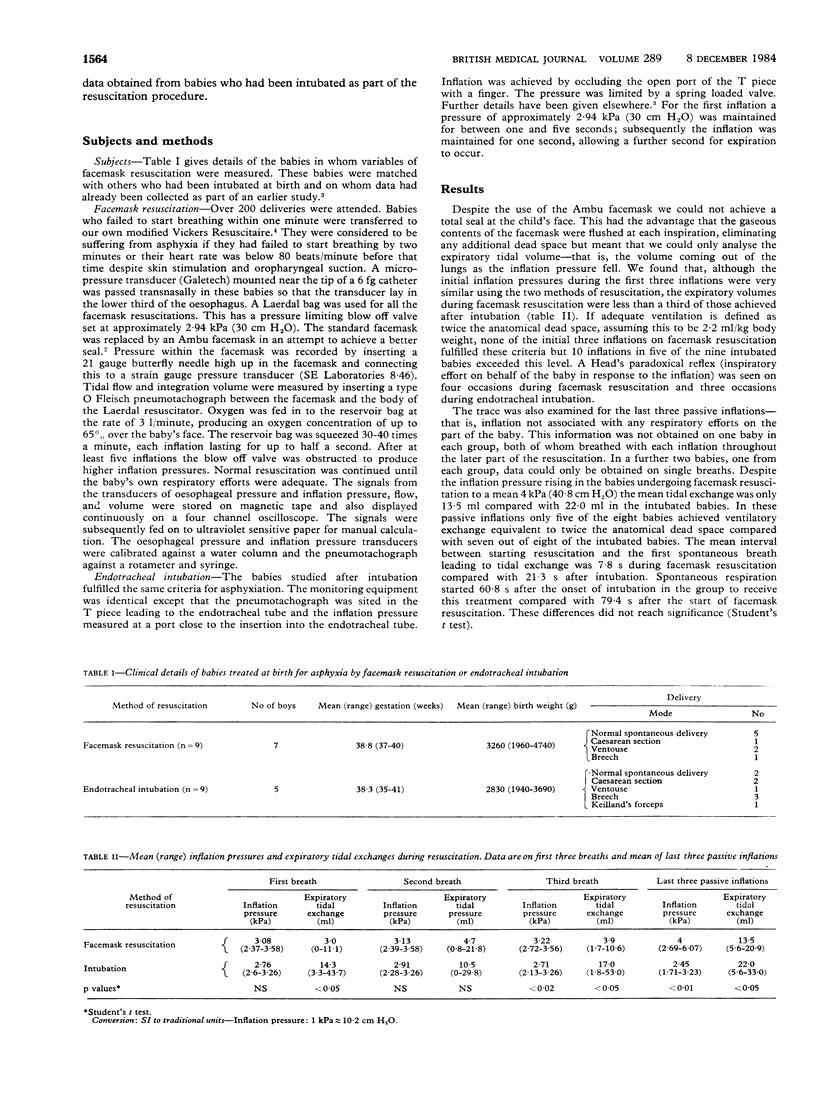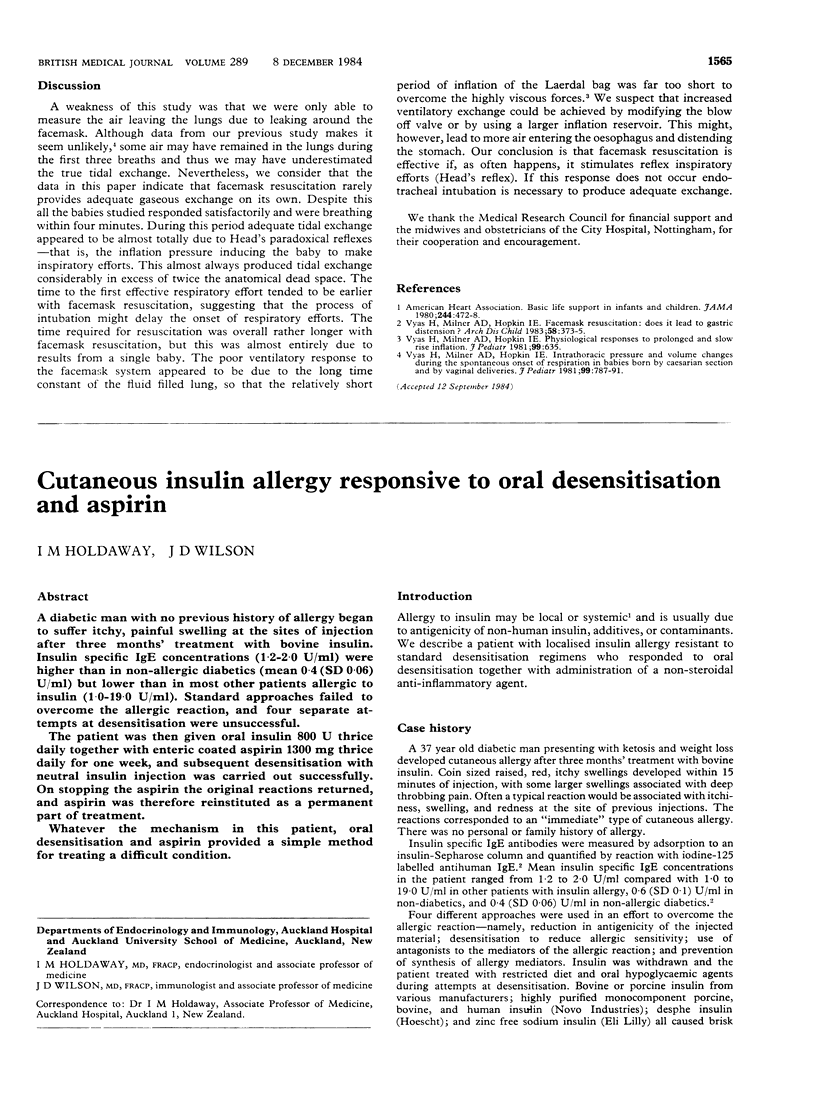Abstract
The efficacy of facemask resuscitation was assessed by measuring the expiratory tidal volume during the first three inflations in nine babies with birth asphyxia and comparing the results with those obtained in a further nine babies resuscitated after endotracheal intubation. The facemask system was relatively inefficient, with tidal exchange less than one third of that seen after intubation and rarely sufficient to produce adequate alveolar ventilation. Successful resuscitation depended on stimulating the baby to make his own respiratory efforts.
Full text
PDF


Selected References
These references are in PubMed. This may not be the complete list of references from this article.
- Vyas H., Milner A. D., Hopkin I. E., Boon A. W. Physiologic responses to prolonged and slow-rise inflation in the resuscitation of the asphyxiated newborn infant. J Pediatr. 1981 Oct;99(4):635–639. doi: 10.1016/s0022-3476(81)80279-x. [DOI] [PubMed] [Google Scholar]
- Vyas H., Milner A. D., Hopkin I. E. Face mask resuscitation: does it lead to gastric distension? Arch Dis Child. 1983 May;58(5):373–375. doi: 10.1136/adc.58.5.373. [DOI] [PMC free article] [PubMed] [Google Scholar]
- Vyas H., Milner A. D., Hopkins I. E. Intrathoracic pressure and volume changes during the spontaneous onset of respiration in babies born by cesarean section and by vaginal delivery. J Pediatr. 1981 Nov;99(5):787–791. doi: 10.1016/s0022-3476(81)80412-x. [DOI] [PubMed] [Google Scholar]


